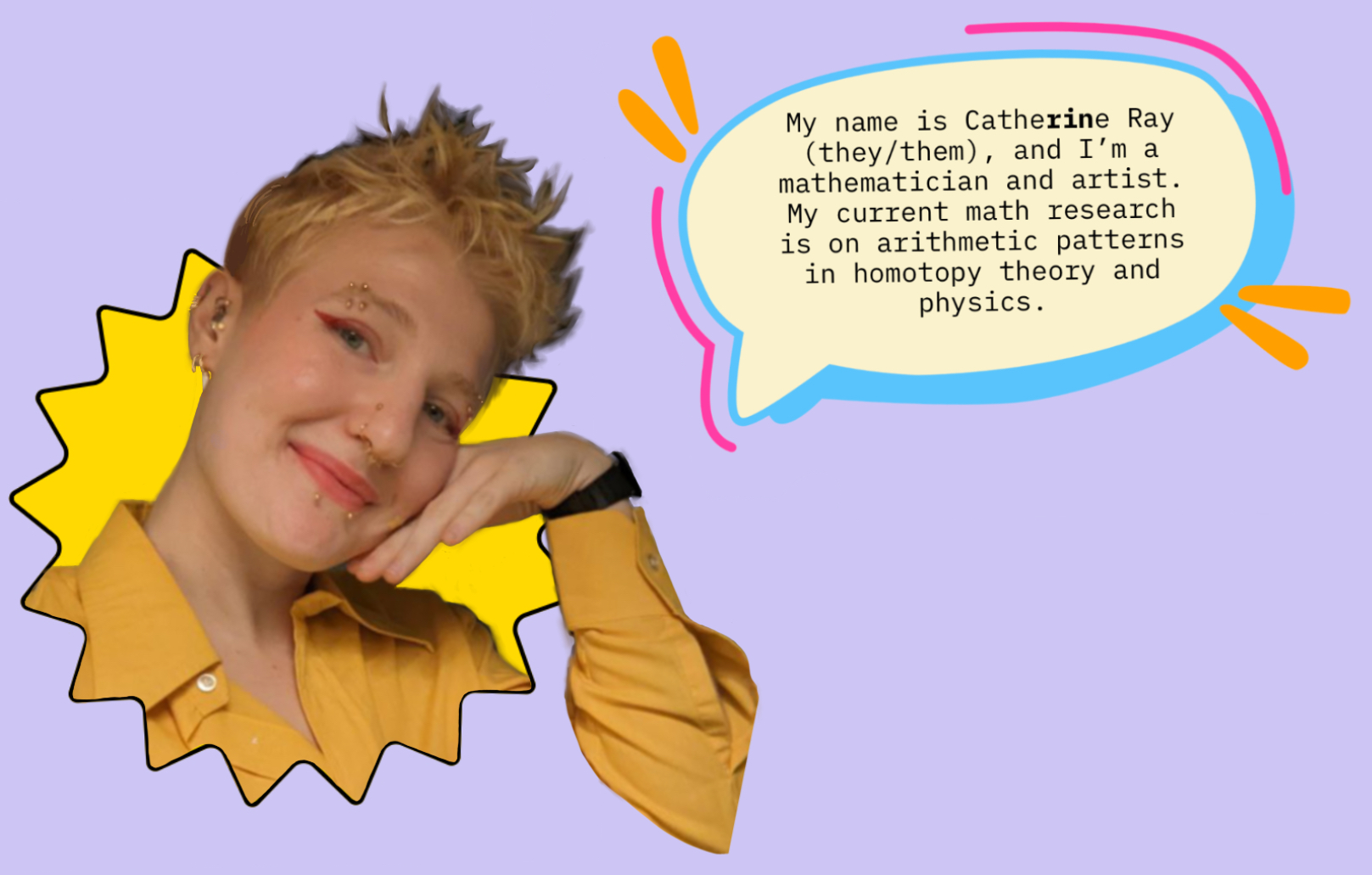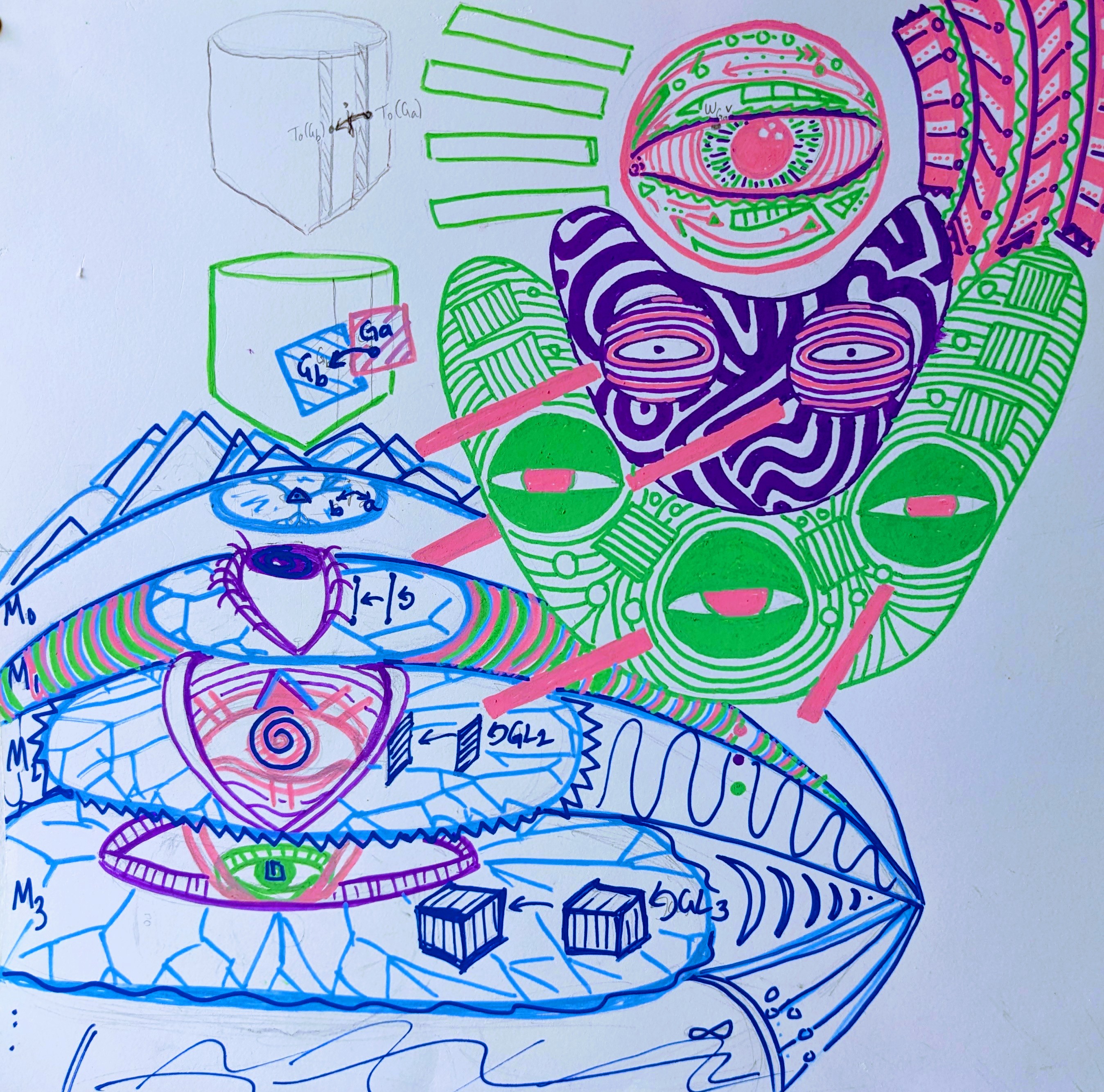
Before I was in math, I worked mostly in scientific simulation, autonomous robotics, and medical technology. I continue to work in chronic pain research, which you can read about here.
I am currently a postdoc at Uni-Münster in the Arithmetic and Homotopy Theory Working Group lead by Thomas Nikolaus and Christopher Deninger. Here’s a recent interview I did as part of On a Tangent: Voices of Mathematics Muenster: How an Inventor becomes a Mathematican.
Before that, I graduated from George Mason University at 16 with a B.S. in Computational Physics, and accepted the Thiel Fellowship in 2014 to develop medical technology and study mathematics under my mentor, Edward Frenkel. I graduated with my Master’s degree from UChicago working with Peter May and Kazuya Kato (加藤 和也), and with my PhD from Northwestern working with Paul Goerss.
Contact me
Curiosity is welcome: fractalcows@gmail.com
My work email: cray@uni-muenster.de
If you are interested in my research mathematics, a few fun papers are below. (You will find the name Catherine Ray on my old research papers and Rin Ray on my newer works, these both refer to the same person. I prefer Rin nowadays.)
Research publications:
- Automorphisms of Abelian Varieties and Principal Polarizations joint with D. Lee; Rendiconti del Circolo Matematico di Palermo Series 2, Volume 71, pages 483–494, 2022 arxiv
- Towards Directed Collapsibility joint with R. Belton, R. Brooks, S. Ebli, L. Fajstrup, B. T. Fasy, N. Sanderson, E. Vidaurre; Advances in Mathematical Sciences, Volume 21, pages 255–271, 2020 arxiv
Research preprints:
- (Thesis Paper 2) Moduli Stacks of G-Curves in Homotopy Theory at \( h = p-1 \) (Sept 2025)
- Towards the \( p=3 \) Kervaire Invariant Problem: The \( E_2 \)-page for the homotopy fixed points spectral sequence computing \(π_*(E_6^{hC9}) \) joint with Eva Belmont (July 2025)
- (Thesis Paper 1) Modeling Group Actions on Stacks (Especially the Lubin-Tate Action) (July 2025)
- A Global Crystalline Period Map joint with M. Neaton and A. Pieper (2018)
In progress:
Zeta Functions in Homotopy Theory:
-
Syntomic cohomology of ring spectra and a \( T(h) \)-local zeta function; joint with Gabe Angelini-Knoll
-
Toward Categorifying the relationship of Symplectic L-functions and Rademeister Torsion: Riemann Roch for Rademeister Torsion in K-theory and L-Theory
-
L-genera and Localizations in K-theory; joint with Daniel Berwick-Evans, Natalia Pacheco-Tallaj
-
All Bernoulli Numbers in Homotopy Theory Are Shifts: Connecting Kevaire-Milnor to Quillen-Lichtenbaum using the compatibility of \( K(\mathbb{S}) \) and \( L_{K(1)}K(\mathbb{Z}) \) joint with Andres Mejia and Noah Riggenbach (on hiatus)
Jacquet-Langlands and Homotopy Theory:
- Toward the Transchromatic Splitting Conjecture Via a Mod p-Two Tower Correspondence; joint with T. Barthel, L. Mann, A. Senger, T. Schlank, P.Srinivasan, J. Weinstein, Y. Xu, Z. Yang, X. Zhou.
Moduli Stacks of Curves in Homotopy Theory:
The group cohomology of the maximal finite subgroups of the Lubin-Tate action is the E_2 page needed to capture all p-torsion information in the stable homotopy groups of spheres. My thesis (2023) attempts to resolve the 40 year old open problem of describing the Lubin-Tate action for all maximal finite subgroups. It does so by outlining a universal way to build a geometric model using a moduli stack of \( G \)-curves given a subgroup \( G \). A key insight is to replace the role of level structures with higher ramification information. To make the thesis more digestible, I have broken it up into 3 parts, the last of which is forthcoming. The only nontrivial p-torsion for odd primes is found at heights \( p^{k-1}(p-1) \).
- (Thesis Paper 3) Writhing Jewels: A Conjectural Description of the Lubin-Tate Action via Moduli Stacks of G-Curves for \( h = p^{k-1}(p-1) \)
- The Eigenvalues of Frobenius of Artin-Schreier-Witt Curves are Gauss Sums (New Families of Newton Strata in the Torelli Locus) Here’s a note toward this: Using Automorphism Groups of Curves to Control the Slopes of their Jacobians
Old and likely dead:
- Covers of the Octahedron; joint with D. Lee
- Duality resolutions for general linear groups; joint with E. Belmont, P. VanKoughnett
Expository writing:
- Zeta Functions and THH July 16 2025
- Using Automorphism Groups of Curves to Control the Slopes of their Jacobians
- (Coming Soon) K-theoretic Tate Poutou Duality Seminar (March 2025)
- Here is a 4 page summary of my work as a graduate student for a general audience, including original illustrations.
- Geometry for Prime Addicts Background on p-adic geometry toward proving the Monodromy Weight conjecture.
- The Hecke Orbit Conjecture and Homotopy Theory Explaining that the stabilizer of the Hecke Action is the Morvava Stabilizer Group.
- An Overview of the Classic Theory of P-Divisible Groups (Published in Oberwolfach Proceedings)
- Fiber Bundles of Formal Disks (with A. Holeman)
- A Complete Proof of the Polynomial Ham Sandwich Theorem, Based on Gromov’s Proof
My two Master’s theses:
- Calculating pi_*(tmf) at the prime 2 (An Illustrated Guide to the May Spectral Sequence)
- Models of Formal Group Laws of Every Height
